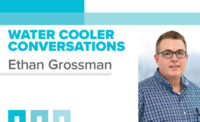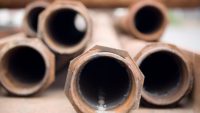I’m sure all of us have words and phrases that bring up memories from our past. I have a memory from my childhood where I was procrastinating completing a chore. I told my father, “That’s easy Pops, I’ll do it later.” He responded to me with one of his nuggets of wisdom, “Nothing is easy in life, son, except getting in trouble.”
I can still hear his voice in my head. So, my whole life I have been hesitant to say anything is easy. For discussion purposes, I am going to go out on a limb and write about one of the easiest formulas in plumbing engineering. I am still reluctant to say it’s an easy formula, but I do remember learning it and thinking to myself, “I can do this plumbing engineering stuff!”
The formula I am referring to is the equation for mixing hot and cold water. This is one of the most intuitive formulas we work with; we all experience it every day, week or month (depending on your personal habits) when we use hot water. Using the language of mathematics, it tells us, “If I take this much really hot water and this much cold water, I’ll get this much tempered water at just the temperature I want.”
The formula for mixed water temperature is shown in the “ASPE Plumbing Engineering Design Handbook, Volume 2,” as equation 6-6:

I want to emphasize the idea of really hot water to remind us of the danger of scalding, especially as we are being tasked to design systems that circulate water at temperatures that will inhibit Legionella growth. Scalding can occur at 120° F while legionella dies at 140° F. Best practice is to recirculate hot water at an elevated temperature and temper the hot water to a safe temperature at the point of use.
The best example for showcasing the mixed temperature formula is a building with an abundance of showers. Let’s take a look at a residential high-rise with 100 showers operating simultaneously at 1.5 gpm, which translates to 150 gallons per minute. How much of this hot water needs to come from the master mixing valve? The givens for the formula will be:
Temp at shower = 110° F
Cold water temperature = 40° F
Hot water temperature leaving master
mixing valve = 130° F
The ratio of hot to cold water will be:

This equation will help us get a ballpark idea of how big our water heater needs to be. We can recall if everyone woke up and took a shower at the same time, in all 100 apartments, our total instantaneous flow would be 150 gpm. Approximately 80% of that flow, or 120 gpm would need to be 130° F hot water. An additional calculation would tell us how much 140° F hot water we need from the water heater itself.

Ninety percent of 120 gpm is 108 gallons per minute. This is the amount of 140° F hot water required for 100 people to take a shower at the same time, each in their own apartment of course.
At one point in time, it could be assumed that most people get up around the same time before going to school or work and take a shower. At the time of this writing, many of our habits have changed and a large percentage of us our working from home. Regardless, the prediction of how a system will be utilized is called the “load profile” and it requires the engineer to put some thought into how the building will be used. Load profiles have been created based on experience over time and can be found in both ASPE publications and sizing guidelines provided by manufacturers.
Sometimes a load profile is prescribed by our clients, like the time an owner told me he wanted all of the guests at his mansion to be able to shower at the same time after a day of sailing and tennis so they could be ready for supper. He couldn’t understand why his mechanical room took up so much space. When sizing a water heater and determining system flow, I usually use three methods and compare them. The method above is a somewhat unrealistic “worst case” method. Then, I will usually check the ASPE methodology. Lastly, I will use the recommended sizing guidelines from a water heater manufacturer.
By looking at one of the “easiest” and most intuitive equations in plumbing engineering, we can see that applying it to sizing a water heater and determining hot water flow is not in fact “easy,” and can get us in trouble if we aren’t careful. Some of the things that are the most basic in life are not always as easy as they are made out to be.
The idiom “easy as pie” makes me think of sharing a sweet dessert with friends or family. The idea of mixing together with friends and neighbors, spending time connecting over a nice dessert can be such a basic act of kindness. Intuitively, we can all take the time to listen to one another and blend our ideas. The formula for mixed water temperature is one of the basic formulas that we should all be familiar in order to perform plumbing engineering. It’s so easy that we can almost do it “in our head” sometimes. We should remind ourselves that even the simplest things we do in life need to be practiced.




